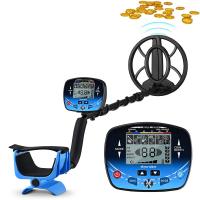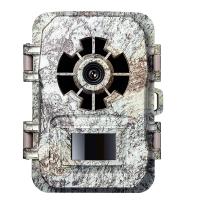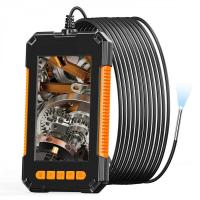Outdoor Trail Camera Wireless
- 00 days
- :
- 21 hours
- :
- 17 min
- :
- 31 sec
- * KF35.133 =KF35.127S1=KF35.127V1+KF28.0011*2+KF42.0013 Wireless connectivity for easy remote access:With the acceptance method being an app, you can easily connect to the camera wirelessly and access the footage remotely.
- * Moon image watermarking for accurate time-stamping:The moon image watermarking feature ensures that the time-stamp on the footage is accurate, making it easier to track events.
- * Real-time preview for live monitoring:The live function allows you to preview footage in real-time, making it easier to monitor the area being covered by the camera.
- * Wide-angle lens for comprehensive coverage:The lens with a FOV of 90° ensures that the camera covers a wide area, making it ideal for outdoor use.
- * Automatic infrared filter for clear night vision:The fully automatic infrared filter unit ensures that the camera captures clear footage even in low-light conditions, making it ideal for outdoor use.
2. Get Free Gift Over $100 - 64G SD Card (on the checkout page)
An outdoor trail camera wireless is a type of camera that is designed to capture images and videos of wildlife or other outdoor activities. It is wireless, meaning that it can transmit the images and videos it captures to a remote location without the need for cables or wires. This is typically done using a Wi-Fi or cellular network.
Outdoor trail cameras are commonly used by hunters, wildlife enthusiasts, and researchers to monitor animal behavior and movements. They are also used for security purposes, such as monitoring remote areas for trespassers or intruders.
Wireless trail cameras typically have a long battery life and are designed to withstand harsh outdoor conditions, such as extreme temperatures and weather conditions. They may also have features such as motion detection, night vision, and time-lapse photography.
Overall, outdoor trail cameras wireless are a useful tool for anyone who wants to capture images and videos of wildlife or outdoor activities without having to be physically present.

Common problems:
1. Error in wireless connectivity: The camera may fail to connect to the wireless network, resulting in the inability to transfer images or videos. To solve this, ensure that the camera is within range of the wireless network and that the network credentials are correct.
2. Battery drain: The camera may experience rapid battery drain, especially when used in cold weather. To solve this, use high-quality batteries and keep the camera warm by using a battery pack or insulating cover.
3. Blurry images: The camera may produce blurry images due to incorrect focus or camera shake. To solve this, ensure that the camera is properly focused and mounted securely to prevent camera shake.
4. Memory card errors: The camera may display errors when reading or writing to the memory card. To solve this, ensure that the memory card is compatible with the camera and that it is properly inserted and formatted.
5. False triggers: The camera may be triggered by false movements, such as wind or small animals, resulting in unnecessary images or videos. To solve this, adjust the sensitivity settings or use a more advanced motion detection system.
6. Limited range: The camera may have limited range, resulting in the inability to capture images or videos from a distance. To solve this, use a camera with a longer range or move the camera closer to the subject.

Maintenance:
1. Regularly clean the camera lens and body: Outdoor trail cameras are exposed to various environmental factors such as dust, dirt, and moisture. Therefore, it is essential to clean the camera lens and body regularly to ensure that the camera functions optimally. Use a soft cloth or brush to remove any dirt or debris from the camera's surface.
2. Check the battery life: Wireless outdoor trail cameras rely on batteries to function. Therefore, it is crucial to check the battery life regularly to ensure that the camera does not run out of power. Replace the batteries when necessary to avoid any disruptions in the camera's performance.
3. Protect the camera from extreme weather conditions: Outdoor trail cameras are designed to withstand harsh weather conditions. However, it is still essential to protect the camera from extreme weather conditions such as heavy rain, snow, or extreme heat. Use a protective cover or housing to shield the camera from these elements.
4. Update the camera firmware: Camera manufacturers release firmware updates regularly to improve the camera's performance and fix any bugs or issues. Therefore, it is essential to update the camera firmware regularly to ensure that the camera functions optimally.
5. Test the camera regularly: Testing the camera regularly is crucial to ensure that it is functioning correctly. Test the camera by taking a few pictures or videos to ensure that the camera is capturing clear and high-quality images. If you notice any issues, troubleshoot the camera or seek professional help.

Related technologies:
1. Wireless Connectivity: The latest outdoor trail cameras come with wireless connectivity options such as Wi-Fi, Bluetooth, and cellular connectivity. This allows users to remotely access the camera's footage and settings from their smartphones or computers.
2. High-Quality Images and Videos: The latest outdoor trail cameras are equipped with high-resolution image sensors and lenses that capture high-quality images and videos even in low-light conditions. Some cameras also come with advanced features such as image stabilization and HDR for better image quality.
3. Motion Detection and Trigger Speed: Outdoor trail cameras are designed to capture wildlife and other outdoor activities. The latest cameras come with advanced motion detection sensors and fast trigger speeds that capture images and videos as soon as motion is detected.
4. Long Battery Life: Outdoor trail cameras are often placed in remote locations where access to power is limited. The latest cameras come with long-lasting batteries that can last for weeks or even months on a single charge.
5. Cloud Storage and AI Integration: Some of the latest outdoor trail cameras come with cloud storage options that allow users to store their footage securely online. Additionally, some cameras also come with AI integration that can help identify and track specific animals or objects in the footage.

Product Advantages:
1. Convenience: The wireless outdoor trail camera eliminates the need for physical retrieval of the camera's memory card. This means that users can access the camera's footage remotely, making it more convenient to monitor wildlife or security in remote locations.
2. Real-time monitoring: With wireless connectivity, the camera can transmit real-time footage to a user's device. This feature is particularly useful for security purposes, as it allows users to monitor their property in real-time and respond to any potential threats immediately.
3. Improved battery life: Wireless trail cameras typically have longer battery life than traditional trail cameras. This is because they do not need to constantly record footage to a memory card, which can drain the battery quickly. Instead, they only transmit footage when necessary, which helps to conserve battery life.
4. Easy installation: Wireless trail cameras are easy to install and set up. They do not require any wiring or complicated installation procedures, which makes them ideal for use in remote locations. Additionally, many wireless trail cameras come with user-friendly apps that make it easy to set up and manage the camera remotely.

Product parameters:
Lens : f=4.0mm F/NO=2.0 FOV=90°
Moon image watermarking : Support
Live function : APP real-time preview
Acceptance method : APP
Infrared filter unit : Fully automatic
Sleep current : about 0.20mA
Interface : USB; TF memory card socket
External alkaline battery specification : 8PCS LR6(AA) Battery: 6V
Password function : 4 digits, numeric and alphabetic support
Memory Card : SD Card 4GB~512GB
- All Reviews
- Image




























